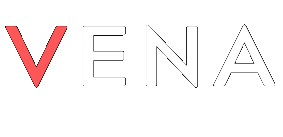If you’re still managing procurement with spreadsheets, emails, or paper forms – you’re not alone. Many small companies are in the same boat. But outdated processes cost time, money, and opportunities.
Here’s how to start digitising procurement without needing a big budget or a full IT team.

Digital procurement isn’t just for big corporations — small businesses can also benefit from streamlined sourcing, improved supplier management, and smarter spending. The key is starting simple. Begin by mapping your current procurement process. Identify manual steps, bottlenecks, and areas prone to errors or delays. Then, choose a basic digital tool — even spreadsheets or free procurement apps — to start tracking purchases, suppliers, and costs.Next, centralize supplier data and contracts in a shared digital space like Google Drive or Notion. This ensures transparency and easy access for your team.Gradually automate repetitive tasks like order confirmations or invoice tracking using tools like Zapier or email templates.Digital doesn’t mean complex — it means efficient. Focus on solutions that save you time and money without requiring a tech overhaul.Start small, think big, and evolve steadily. Digital procurement is not a destination — it’s a journey toward more control, clarity, and value in your business.
1. Understand Where You Are
Start with a quick self-check:
- Are purchase requests tracked?
- Do you compare supplier offers?
- Can you find contracts and invoices easily?
- Are approvals often delayed or unclear?
- Do you know how much you spend roughly per category e.g. office supplies?
If the answer is “no” to most, your procurement maturity is low — and that’s OK. Knowing this is the first step.
2. Choose One Priority to Fix First
Don’t try to digitise everything at once. Pick a simple, high-impact area:
- Use an online tool (like Google Forms or Typeform) for purchase requests.
- Store contracts and orders in a shared drive (e.g. Google Drive or Dropbox).
- Start approving purchases via email or a basic workflow tool.
Small wins make a big difference.
3. Automate What Wastes the Most Time
Look for tasks you repeat every week – like chasing approvals or checking invoices. Free tools like Kissflow (basic version), Trello, or low-cost procurement platforms can help automate:
- Purchase approvals
- Supplier records
- Invoice tracking
4. Keep Everything in One Place
Centralise your data. Even a shared Excel file (on the cloud) is better than 10 scattered versions. Later, you can move to free or low-cost software that manages purchasing, suppliers, and payments in one place.
5. Include Your Suppliers
Ask your suppliers to send quotes and invoices by email in a standard format. Encourage them to use PDFs, e-signatures, or basic tools. You don’t need to invest in complex systems to create structure.
6. Review and Improve
Once your basic process is running smoothly, look at:
- Where time is still being lost
- Who’s bypassing the process (and why)
- What other areas could be simplified
Then, improve step by step — no need for a full system overhaul.
Vena Can Help
At Vena, we help small businesses make procurement simple, efficient, and digital — without big investments. We’ll show you exactly where to start and how to grow your system over time.
Let’s build smart procurement habits from the ground up.
👉 Book a free 30-min call to explore your next step.






